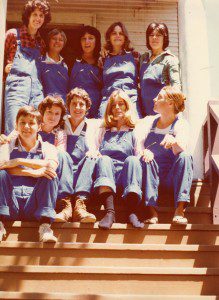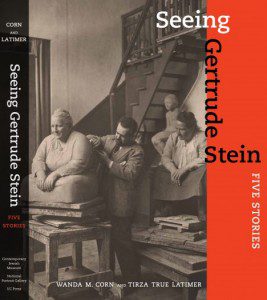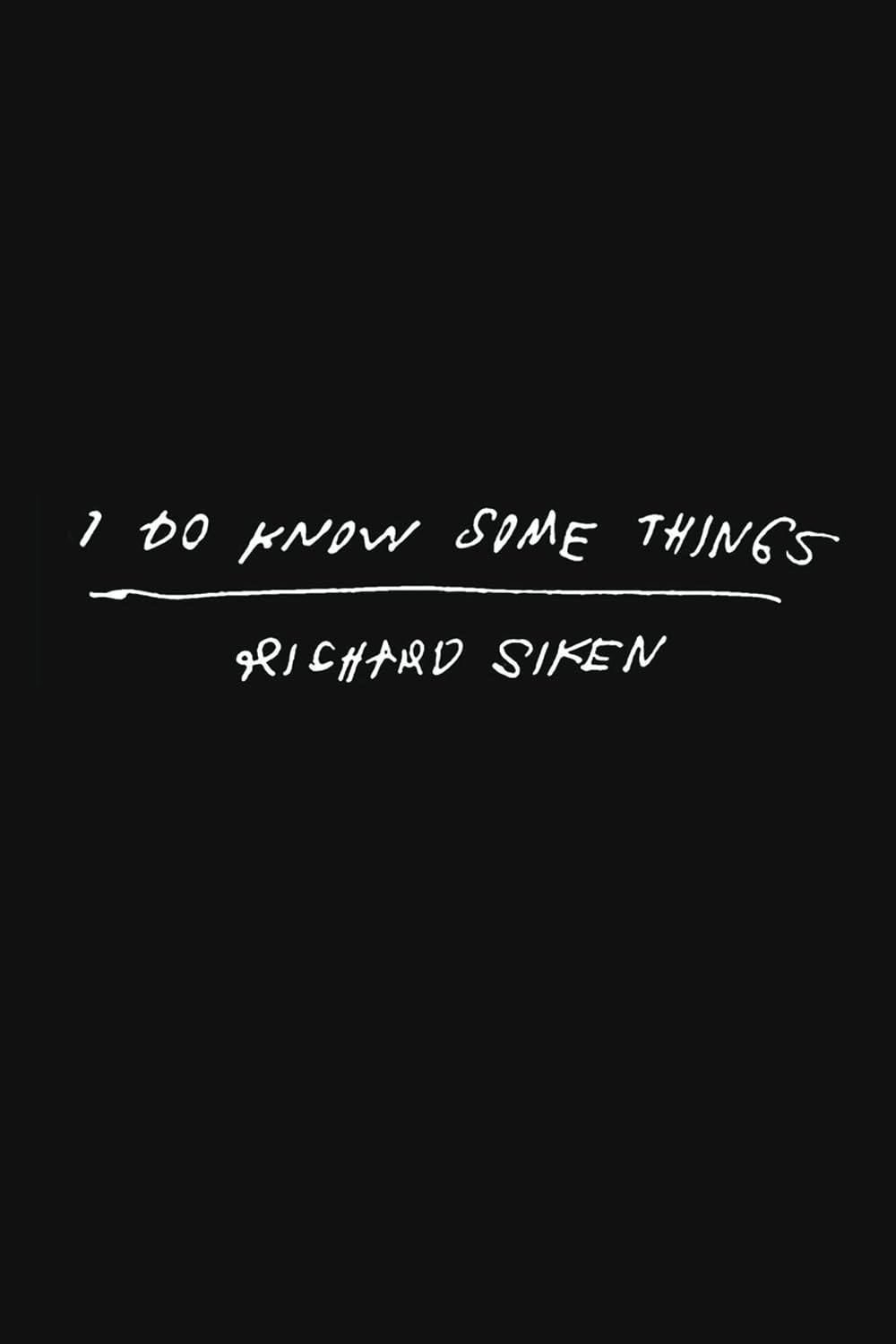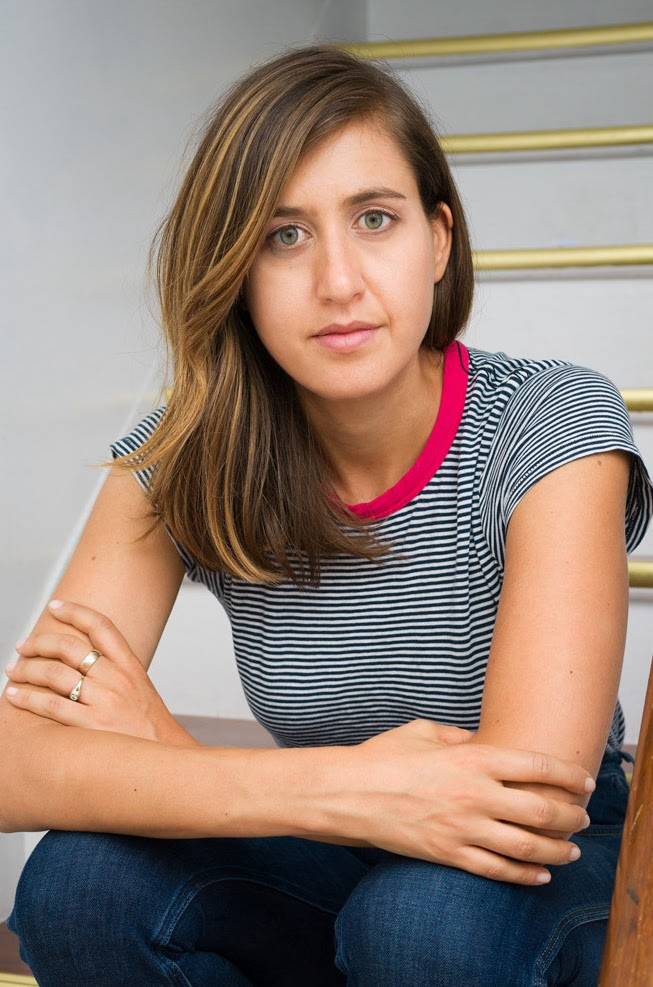In 2007 I enrolled in a master’s program at the California College of the Arts where I stumbled through the Visual and Critical Studies Department with a hefty dose of skepticism for the white-walled, private institution I chose to attend. This was the same year that Tirza True Latimer joined the department as chair and associate professor. This was a lucky, historical accident, to borrow her term. I was a young, aspiring writer and critic, pursuing an academic path I would later abandon. Unbeknownst to me I was also on an unconscious search for mentors to guide me through some of life’s more pressing questions: what exactly does it mean to exist in the arts—in the world, in general—as a feminist and dyke? I clung to Tirza’s lesbian-feminist perspective like a buoy.
She is, by many standards, successful. She co-edited Modern Woman Revisited: Paris Between the Wars with Whitney Chadwick. She wrote Women Together/Women Apart: Portraits of Lesbian Paris and in 2011 she curated the exhibition, Seeing Gertrude Stein: Five Stories with Wanda Corn at the Contemporary Jewish Museum. Before these professional successes is a life trajectory with a familiar arc: a youth spent participating in leftist, political actions, living in queer collectives in Oakland, years of manual labor, including the time she spent with Seven Sisters, an all-women construction collective. These histories—Tirza’s “roots” in queer and political communities—are felt as much through her teaching as the years she spent steeped in critical theory and art history.
At the end of our first year, the department sponsored a lecture by the feminist philosopher and internationally renowned powerhouse, Judith Butler. During the small reception that followed the lecture, Tirza fulfilled her professorial duty to introduce and welcome Butler. Her talk vacillated between professional acknowledgements and a deeply emotional appreciation for the ways in which Butler’s theories unlock our understanding of gender. Tirza’s speech distilled would have sounded like this: We love you. We would not be here without you.
It is these humble and tender emotions coupled with an unwavering and fierce agitation of feminist politics that ground her teaching and practice as an art historian and writer. For this interview, I asked Tirza if we could talk specifically about feminist teaching. The stories that emerged from our conversation included her coming of age, politicization within the women and gay liberation movements, her struggles with the academy and our shared good fortune of being queer.
***
Tirza True Latimer: I owe everything to being queer.
The Rumpus: What does that mean?
Latimer: Misfitting in my given environment meant that I didn’t really have to try to be a debutante or get married. It was like having another set of standards or ambitions. When I was much younger before I had—Well, we didn’t actually say queer until later—but before I had a language for the kind of misfitting that I felt all along, I was just determined to be an artist because that was a pass.
Rumpus: So, before you came out as queer, you came out as an artist because it was a pass for being a misfit?
Latimer: Yes, especially because I was coming of age during the beat generation, so the beat poets were really good role models. I tried a number of things. I have a tin ear, so it wasn’t music. As a visual artist I have a certain facility, but when I really ran into people who were enormously creative in visual forms, I recognized that I was more of a draftsperson. I became a poet but had terrible stage fright. Then I entered a long phase, which is still quite active, where I was going to be a writer.
Rumpus: I love hearing you call it a phase, as though after all these years of being a writer, it may still pass. So, it was writing or identifying as an artist that allowed you to be yourself more fully?
Latimer: Yes. The other thing that was a lifesaver is that I wasn’t born five years earlier. I was 18 years old in 1968 and shit was totally hitting the fan. Everything was just exploding. Woodstock was happening, the anti-war movement was ramping up. My first semester in college, I spent the whole time on strike. My second semester in college, I was in jail in Washington D.C. with a bunch of really brilliant people during the May Day demonstrations.
Things could have turned out so differently but I had all this context, all of this support, all of these thinkers, all of this movement. I really feel like the historical accident of being the exact age I was in at that exact time and in that exact place and having the privilege to devote myself to the peace movement for a good number of years was so lucky.
Rumpus: What about your queerness? When did that become part of the picture?
Latimer: Well, I did have boyfriends but in my early 20s I fell in love with a woman who loved me back. When that happened, I was like, “Oh, ok. This is really different!” It was super enabling because then I was really out of the heteronormative crosshairs. Then very shortly I became engaged in the women’s movement and the struggle that lesbians were having with the N.O.W. (National Organization for Women) version of feminism. We were trying to politicize the movement around difference—what an amazing education it was.
Rumpus: What happened next?
Latimer: Right after college I moved out to the Bay Area and the whole gay rights movement was flowering. The notion of feminism was expanding. I was a lesbian-feminist, and then I was a queer and then a queer activist. My mind was expanding around the inter-relationships of all the different forms of oppression and how little I knew about it all. I started out thinking I had a few of the answers and as I grew I had fewer and fewer answers and more and more questions.
Rumpus: That’s a good place to be! That’s why I love that you call your writing a phase it’s an acknowledgment that nothing is certain or settled. That’s pretty queer of you!
Latimer: It’s being in interrogation and in questioning mode rather than militant mode. To grow into that was enriching.
Rumpus: Do you remember a specific time when feminism became part of your language?
Latimer: Absolutely. There was a no-turning-back moment. It had to do with reading. I was 18 or 19 and I was reading Ti-Grace Atkinson and Shulamith Firestone. I read Simone de Beauvoir for the first time and suddenly the way I saw simple things like advertising changed. I was walking around for several years in a constant state of outrage, speechless outrage!
Rumpus: At society? At the role of women?
Latimer: At all of it. It was just like…so fucked! There was another turning point when I got out of college. I went to do some vocational testing, which was really just a typing test. I wasn’t a good typist and I didn’t want to be a typist. The woman who administered the test said to me, “I bet you don’t wanna get married either.” I said, “No!” She assured me that she didn’t either but then she found this really nice man and it’s really not so bad. So, I freaked out! Of course, my typing test was abominable! This woman was determined to lock me in a room until I improved. I thought, Am I actually going to be able to do this? Am I going to put up with this? I ended up sneaking out of the building. It was 1972 and there weren’t many people around me that hadn’t become that woman. I was just going on a hunch that there had to be something else out there.
Rumpus: It turns out that what was out there was a world of dykes and construction jobs in the Bay Area!
Latimer: Yes! I landed here and my lesbian friends had a walk-in closet room for me for $50. I got a dog. I got some training in carpentry. Within a year, I was putting ads in the paper saying I could do all kinds of stuff that I didn’t know how to do. I would research how to do things like fix broken decks and borrow tools from the tool library and figure it out. Any time there would be another woman in the lumber store, it’s like we were authorized to introduce ourselves to each other and trade telephone numbers. Or any woman who was driving a pickup truck, you could literally stop her in the middle of the street. There ended up being a loose coalition of us.
 Rumpus: Is this how Seven Sisters Construction was formed?
Rumpus: Is this how Seven Sisters Construction was formed?
Latimer: More or less. Seven Sisters was already a functioning collective when I joined. We were bidding against each other for a job building a geodesic dome in this Berkeley dyke’s backyard. The client couldn’t decide between us. So she said, “Couldn’t you all just work together?” So, we did.
Rumpus: How long did you work in carpentry?
Latimer: Twenty years.
Rumpus: While you were working construction, were you also still engaged in the arts?
Latimer: No, not at all. I mean, for about five years after I got out of college I kept up my poet persona. But when I started doing construction for real I had so much to learn and it was so hard. And at the time I was working with one collective and living with another collective…
Rumpus: Ah, I am very familiar with this lifestyle, yes.
Latimer: That became my life. I didn’t think of myself as a poet anymore. I was just learning to hammer nails. In a way it was a real relief. I didn’t like to perform and I wasn’t having success getting published. I took that very much to heart. Poetry—the rightness of poetry is so personal. I felt like a masochist for continuing with poetry! There was no joy in that. Where the joy was and where I was successful, by my criteria, was building tangible things. I was building community around that. I didn’t need to be an artist to authorize difference anymore.
Rumpus: Have you ever had an experience with art historical writing that felt personal like more than an intellectual investment?
Latimer: Well, it is more than an intellectual investment. The underlying motivation is seriously personal and has to do with a belief system—social and political. Art historical writing has a different relationship to authorship than poetry. We’re always talking to the others that we’ve read and heard. It just doesn’t feel quite as located in the “me,” and so, there is that distance.
I’m saying that now but I go out a limb every time I write a book. The little feedback I’ve gotten is pretty positive. People aren’t leaping out of their skins to publish me, so, that’s a form of feedback. That still affects me. But there are so many other opportunities to circulate work. If I’m just going to go sulk about not being Duke [University Press] material instead of doing what I need to do to get something out there so I can actually participate in this conversation, then that’s on me.
Rumpus: How did you get to art history from 20 years of construction?
Latimer: Well, I tell that story in two ways—this is a little false but not entirely! Sometime in my 40s, I ruptured a disc in my back and one leg was paralyzed for almost a year. I knew I wasn’t going back to carpentry. I could be a contractor, which I hated or go to architecture school. But I hadn’t met many architects who I wanted as colleagues. There is a class dynamic between architects, contractors and builders. Besides, if I went to architecture school, I’d have to learn all these new skills.
I figured if I was willing to go back to school, then I could study any field. I started taking classes at UC Berkeley by con-current enrollment. The first class I took was feminist theory in art history with Anne Wagner. It was the first time I read Denise Riley, Luce Irigaray, and Kaja Silverman. Judith Butler had just published Gender Trouble and I couldn’t understand a word of it. I would read it over and over until I got something or someone would say something that allowed me to get a handle on a little piece of it. It was exhilarating!
I’d take long lunch breaks from my construction jobs and show up to class in my work-clothes. I had caulk in my hair…I had no idea what I was getting into. I had no idea that that art history program was the second most prestigious in the country. Anne Wagner and I were about the same age; she had made a totally different set of choices and just achieved and achieved and achieved in the academy and there I was with caulk in my hair.
Rumpus: So, what is the other story?
Latimer: The second narrative is very similar to 20 years earlier when I was breaking into construction; here’s this wall ready to be torn down. To hell with anything else! Here’s this incredible opportunity to make mischief! The vocations are a kind of a pretext. Art historian, carpenter, those were the accidents. Those were the areas that offered themselves to me. Those were the places that I felt like I could make trouble, as a feminist and lesbian.
It was a historical accident. I felt super lucky. At the particular moment I applied to PhD programs, queer scholarship was still being invented. It was exciting because art history was such a conservative field. It was the Fort Knox of a certain value system. Now, the field is much more sophisticated. In some ways, it’s a struggle for me to grow with the field. I’m slowing down and that’s fine. I don’t want this to sound too negative, but I am being surpassed in so many ways by the theoretical work of my colleagues in visual studies and queer studies.
Rumpus: Well, the academy is a pretty brutal place. I love teaching but I don’t want to go to another institution to get another degree. I have so many negative associations with the academy and the ways that it divides people, your self, your thinking…
Latimer: I completely agree. The competiveness of that system, the level of expectation, of impending judgment…I always feel so not-sturdy in those environments, like a wilting violet. I’m just not built to withstand that kind of pressure; it’s toxic to me.
Rumpus: So, how do you survive? It can’t be only brutal.
 Latimer: Well, then you have students. The classroom experience is so alive. I learn so much. We make connections with people at really important times of their lives where one tiny thing can make such a huge impact…God, you know, everybody is so vulnerable and just the very fact of attempting to create some kind of sanctuary or support is huge. There’s not a lot of that going on in most other places.
Latimer: Well, then you have students. The classroom experience is so alive. I learn so much. We make connections with people at really important times of their lives where one tiny thing can make such a huge impact…God, you know, everybody is so vulnerable and just the very fact of attempting to create some kind of sanctuary or support is huge. There’s not a lot of that going on in most other places.
Rumpus: Well, certainly not in academic institutions. This is where feminism makes an intervention in academics. When I was your student, it was obvious to me that you had a whole other life experience you were pulling from. There wasn’t the rigidity or the purely intellectual way of relating to your students that I associate with the academy. Part of this has to do with being queer because we have a totally different experience of community building and…
Latimer: …different expectations of what professional looks like.
Rumpus: Yeah, and hierarchies, all of that. I’ve been thinking about what makes a feminist classroom, do you want to hear what I have?
Latimer: Yeah!
Rumpus: The first thing is that the whole self is invited in the classroom. There is a rejection of the mind-body split. People’s socialization, their familial, cultural, ethnic background, their emotions, and bodies are all acknowledged. Second, the feminist classroom becomes a place to work through issues of oppression, power, and privilege not just in the content of what is taught, but also in how the class is run. Next, it’s a place to educate about female artists, people of color, queers as counter to the cannon. Then there’s the attempt to politicize people—trying to push students into consciousness and action. Lastly, subjects not usually invited into academic spaces, more “feminine” concerns like ancestors, emotional intelligence, magic are considered foundational and important to who we are and to education. What do you think?
Latimer: I think that’s very well said. I completely buy it.
Another role of the pedagogue is to balance the conversation and keep it from becoming an exclusively personal narrative and people avoid doing the difficult work of making political connections.
Rumpus: This is an important part of organizing, too. It takes realizing that you are not alone in your experience and making the connection to larger systems of oppression. Once that happens, we start building!
Latimer: Yes, those skills are really critical. The relationship to authority is another important part of the feminist classroom. I try to create opportunities for participatory learning and self-education. I might be the facilitator, but I am not delivering knowledge. I believe that college-aged students bring mature skills and experiences and can be part of the teaching. But there are students who resent this type of teaching, who want their knowledge delivered because that’s what they paid for. I really struggle with that.
Rumpus: I’ve gotten that feedback, too. It’s tough because the way you teach disregards the very well socialized idea of what it means to be a student and the traditional expectations of a classroom.
Latimer: And sometimes that’s too much for some students.
Rumpus: I struggle with how to navigate socio-economic difference in the classroom. I know that I alienate my heterosexual, cis-male students, for example. For one, many seem to be deeply confused once they find out I’m queer, then confused by my politics—which are absolutely a part of my classroom. I don’t teach classes that are literally about feminism, but it is the frame through which everything is filtered. How to create space for people to acknowledge and share their experiences but not get stuck there…and then also teach art somehow! It’s extremely challenging.
Latimer: You have a challenge that I didn’t. Students really give me a huge break for being older than their mothers. There’s not that same impulse to identify. I am just so alien and part of it is age.
Rumpus: I think this is more challenging for female teachers because it’s assumed that as women and/or queers we are pushing an agenda, the material we teach will never be seen as “neutral,” as if there is such a thing.
Latimer: It’s pretty horrifying.
Rumpus: Then I always question myself: Was I too casual? Do I need to wear blazers and act with more authority?
The flip side of all this is that I end up having a crew of queer students or young women or students of color who are grateful for the class for the same reasons that others are put off by it. I’ve witnessed a lot of break through moments; students working through their own shit personally or politically and then it’s so worth it. Teaching in a way that is aware of power in a classroom and is attempting to break it down and inviting the whole self…so much becomes possible.
Latimer: There is not a lot of reinforcement for being a whole person in capitalism, let alone in the universities.
Rumpus: Speaking of the whole person, I bet Anne Wagner was just as impressed with you in your work clothes and the caulk in your hair as you were with her back when you started all this trouble making. You, too, were accomplished.




